The History of Music Games
20 years of rhythm-based rocking - from DDR to Guitar Hero
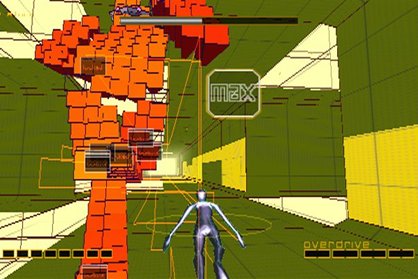
Rez - DC Japan 2001, PS2 North America 2002, 360 2008
Like a 3D version of Otocky, yet with way more trance music, Rez expands on the concepts presented in the original generative musical shooter. Players control a hacker through an on-rails supercomputer made entirely of trippy visuals while firing projectiles that create sounds and melodies upon impact. It’s also worth noting that your actions are locked to the rhythm of the music, meaning every shot/hit did not land in real-time, but rather was quantized to impact on every beat.
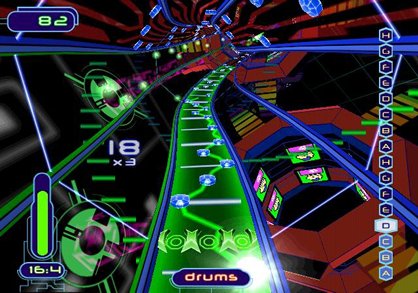
Frequency - PS2 North America 2001
Amplitude - PS3 North America 2003
Another on-rails shooter, Frequency enables you to pilot a virtual avatar down an octagonal tunnel, where each track consists of one instrument of asong. Correctly playing the sequence of notes on one track for two measures will lock that section for a limited time, so you can switch between walls and “play” the other instruments (e.g. synth, vocal track, drum/bass). Points are accumulated by quickly moving back and forth between tracks and keeping the music going. Frequency also gave you the ability to remix any of the songs in the game by changing the tempo and modulation of an instrument. It was followed by its sequel, Amplitude.
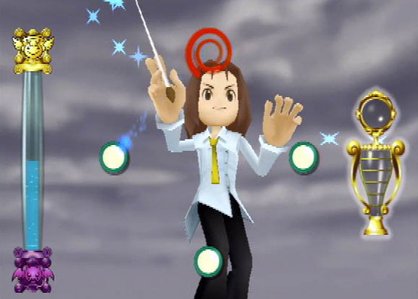
Mad Maestro - PS2 Japan 2001, North America 2002
Maestro is more like an offshoot of rhythm-based gameplay in that while you conduct pieces like “Night on Bald Mountain” and “Swan Lake,” you’re primarily concerned with the volume of your orchestra. You must make use of the PS2’s pressure-sensitive buttons to adjust for low, medium and high volumes. Some deemed the extra level of pressure-sensitive game mechanics too difficult in addition to the rhythm gameplay, but that didn’t stop subsequent sequels from being released in Japan. See this as a precursor to the upcoming Wii Music.
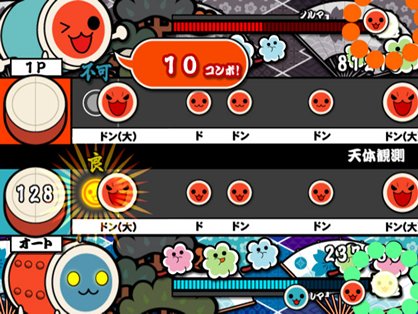
Taiko Drum Master - Arcade Japan 2001, PS2 Japan 2002, PS2 North America 2004, PSP Japan 2005, DS Japan 2007
The Japanese word “taiko”translatesto“wide drum,” which is exactly what you use in this egregiously difficult rhythm-based game. Note symbols scroll horizontally across the screen and indicate where you need to strike the drum. Blue means you must strike the rim, while Red specifies the drum face must be hit. The size of the symbol also dictates whether you strike with both sticks at the same time or just one. If it seems daunting, than you better believe it is. Even with a cutesy appearance, Drum Master will own you and some of the song inclusions are suspect. We still haven’t yet figured out why someone thought “Love Shack” or “Toxic” would translate well into Taiko drumming.
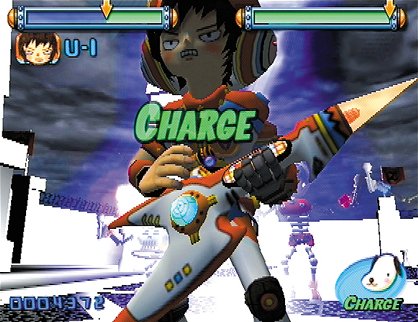
Gitaroo Man - PS2 Japan 2001, North America 2002, PSP 2006
Playing as the titular hero, you blow the crap out of enemies and flying robots with the power of rock. This rhythm/action game is a little complicated but is based around successful button presses corresponding to each face button and a phase bar traced with the analog stick. Gitaroo Man is something of a cult favorite and has since been reprinted and even remade for the PSP.

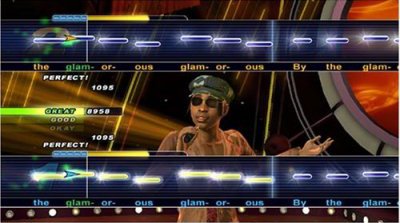
Karaoke Revolution - PS2 North America 2003, Wii & 360 2008
Developed by the Guitar Hero and Rock Band masterminds at Harmonix and published by Bemani, Revolution enables you to sing (horribly) to some of your favorite songs by adjusting to whatever octave you sing in. Lyrics scroll from right to left with “note tubes” attached, which are represented as how long you hold the note. A pitch arrow on the left side of the music scroll measures the pitch you’re singing at. In fact, you don’t even have to sing actual words, as long as you’re belting out tunes in the accurate pitch of the song. Later entries adopted the painfully popular American Idol license. Yay.


SingStar - PS2 UK 2004, PS2 North America 2006, PS3 North America 2008
Insanely popular in the UK and Australia, SingStar is similar to Karaoke Revolution - players sing along to chart hits and classics while being scored on how closely their pitch matches that of the song’s pitch. What’s cool is that every new version enables you the ability to swap out your new disc for an older version you may have. Thisgranted you the ability to play the older games with the new features. And for the bold, the EyeToyturns you into the star of your own karaoke video. Recommended for maximum buffoonery.
Sign up to the GamesRadar+ Newsletter
Weekly digests, tales from the communities you love, and more
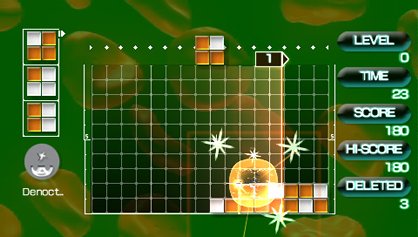
Lumines - PSP Japan 2004, North America 2005
Lumines Live! - XBLA 2006
Lumines 2 - PSP North America 2006
Designed by Tetsuya Mixuguchi - the man behind Rez - is this block-drop puzzle game, where the background music can almost be described as your enemy. 2x2 blocks of two different colors fall upon a grid, while a timeline - synchronized to music - sweeps the grid. For example, faster tempos mean faster sweeps. The goal is to create a 2x2 or 2x3 area of matching blocks so the timeline sweep eliminates them andnets you points. The soundtrack is thus modified by your actions and is integral to play.


